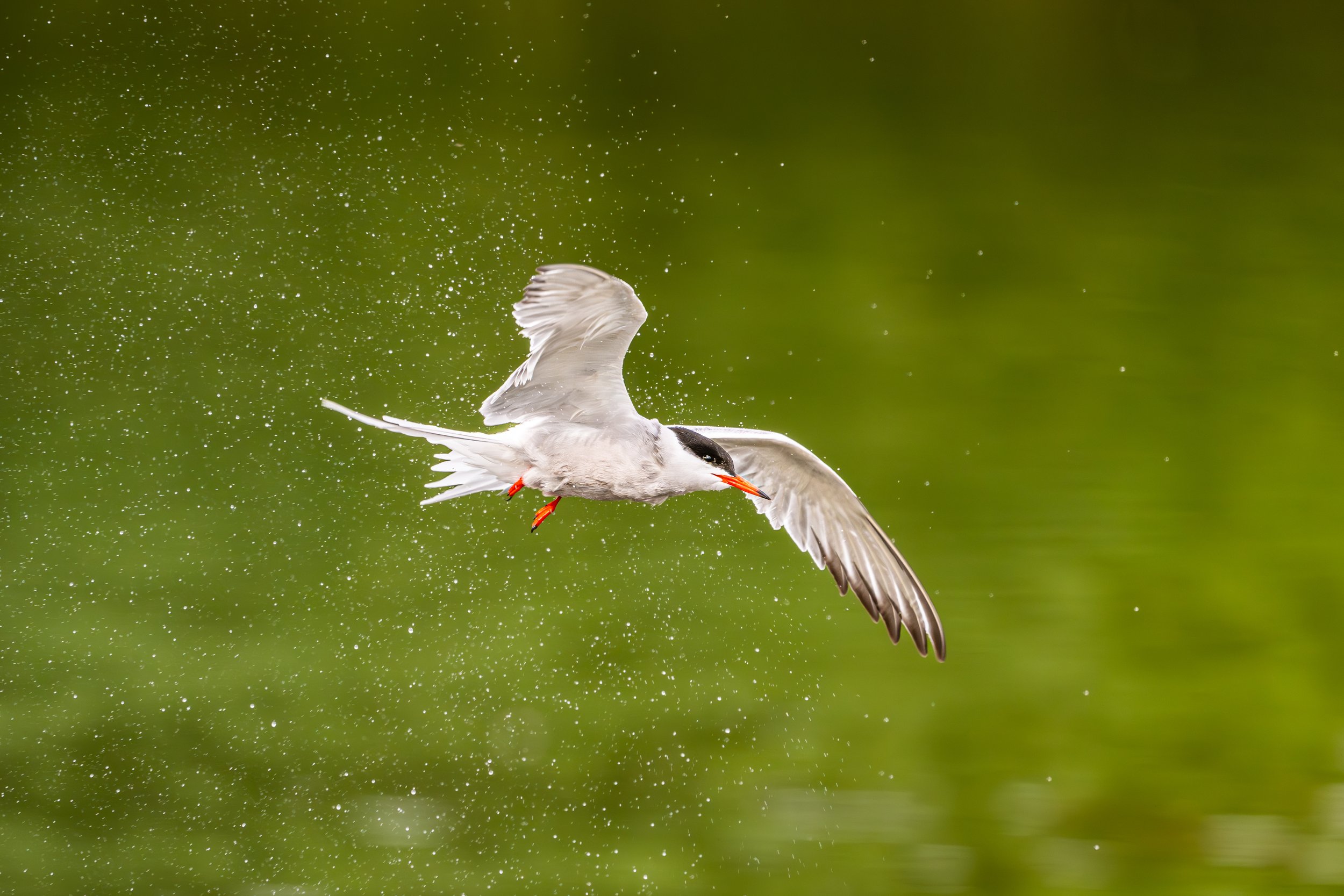How to Capture Birds in Flight: A Step-by-Step Guide
Photographing birds in flight is one of the most rewarding challenges in wildlife photography. The grace and speed of these creatures require skill, patience, and practice. Whether you’re trying to capture the elegance of a heron or the agility of a tern, this guide will help you take your bird photography to new heights.
1. Prepare Your Gear
Birds in flight move quickly, so having the right setup is crucial:
Telephoto Lens: A lens with at least 300mm focal length allows you to capture birds from a distance without disturbing them. For example, when shooting with a Nikkor Z800mm f/6.3 PF S lens, it’s important to use a fast shutter speed.
Shutter Speed: Use a fast shutter speed, ideally 1/2000s or faster, to freeze motion. With high-resolution cameras like the Nikon Z8 (45 MP sensor), I often double up the traditional double rule when shooting with my Nikkor Z800mm f/6.3 PF S lens. Instead of 1/1600s, I jump to 1/3200s to ensure the images remain tack sharp, even for fast-moving birds in flight.
Autofocus Modes: Most cameras offer continuous autofocus tracking modes (AI-Servo or AF-C). Newer cameras, like the Nikon Z8, feature advanced AI-driven subject recognition. Specific modes such as Bird 3D Tracking provide an edge in challenging bird flight scenarios.
Shooting in Bursts: Set your camera to continuous shooting mode to capture multiple frames per second and increase your chances of getting the perfect shot.
2. Understand Bird
Behaviour
Knowing how birds behave is essential for anticipating their movements. Herons, for example, often take a slow, deliberate flight, while terns dart unpredictably as they fish.
Pre-Flight Cues: Birds often give subtle signs before taking off. Ducks and geese exhibit head bobbing as a cue. Pay attention to the flock as well—these are social birds, and when one starts bobbing, it’s often part of a group communication. More frequent bobbing across the flock suggests a likely takeoff.
Flight Patterns: Observe and predict their direction. Ducks and geese will often swim in the direction they plan to take off. Position yourself ahead of their trajectory to capture them flying towards you.
Wind Direction: Birds always take off and land against the wind. Use this knowledge to anticipate takeoffs and landings, positioning yourself for optimal shots.
Recognizing Patterns: For species like common terns, observe their fishing patterns. Terns often circle specific areas of a lake before diving. Reposition yourself while they’re circling to better frame their return dive.
3. Master Shooting Techniques
Panning: Follow the bird’s movement with your camera to keep it in the frame. Practice moving smoothly to match the bird’s speed.
Framing: Leave space in front of the bird for a more dynamic composition. For example, a heron gliding across wetlands looks more balanced with space to “fly into” the frame.
Background: Choose a background that contrasts with the bird, such as the clear sky or blurred wetlands, to make the subject stand out.
4. The Perfect Time and Place
Golden Hour: Early mornings and late afternoons provide soft, warm light that enhances details and colors.
Wetlands and Reserves: Locations like the London Wetland Centre are ideal for photographing herons and terns. These areas offer diverse bird activity, allowing you to practice on various species.
Capturing a Heron in Flight
"As the heron spread its wings, I anticipated its movement by watching its pre-flight cues. Using a shutter speed of 1/3200s and panning to match its graceful flight, I captured the moment it soared over the wetlands, framed by a soft, glowing grass and splashing water off of its feet."
Capturing a Tern’s Dive
"A tern hovered briefly above the water before plunging for its catch. By observing its behavior and keeping my camera in Bird 3D Tracking mode, I managed to freeze the dramatic dive with a burst of shots. The final image is the striking frame wide portrait of the fisherman with the catch proudly shown and a sun reflection in the eye seemingly staring right into the barrel of my lesn"
Respect the Wildlife
While chasing the perfect shot, always prioritize the well-being of your subjects. Maintain a respectful distance, use a telephoto lens to avoid intrusion, and never disrupt their natural behavior.
Bird photography is a rewarding blend of skill, observation, and creativity. Ready to improve your skills further? Download our free mini field guide to learn essential techniques, or join one of our wildlife photography workshops for hands-on experience with herons, terns, and more!
[Download the Mini Field Guide] [Join a Workshop]





